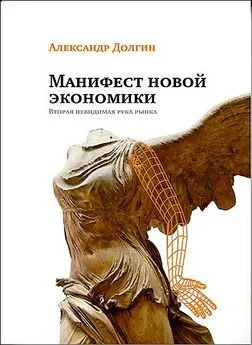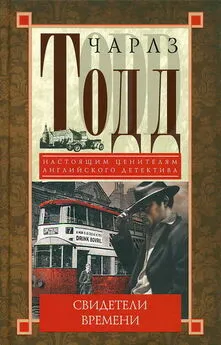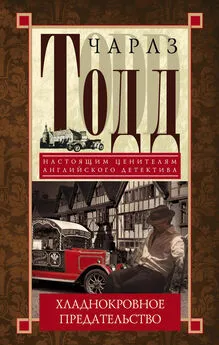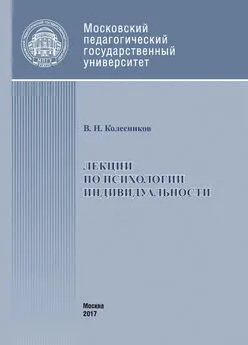Тодд Роуз - Долой среднее! [Новый манифест индивидуальности]
- Название:Долой среднее! [Новый манифест индивидуальности]
- Автор:
- Жанр:
- Издательство:Манн, Иванов и Фербер
- Год:2017
- ISBN:9785001008934
- Рейтинг:
- Избранное:Добавить в избранное
-
Отзывы:
-
Ваша оценка:
Тодд Роуз - Долой среднее! [Новый манифест индивидуальности] краткое содержание
Долой среднее! [Новый манифест индивидуальности] - читать онлайн бесплатно полную версию (весь текст целиком)
Интервал:
Закладка:
William Cyples, “Morality of the Doctrine of Averages,” Cornhill Magazine (1864): 218–224.
77
Claude Bernard, Principes de médecine expérimentale, L. Delhoume, ed. (Paris, 1947), 67, quoted in T. M. Porter, The Rise of Statistical Thinking, 1820–1900 (Princeton: Princeton University Press, 1986), 160.
78
Claude Bernard, An Introduction to the Study of Experimental Medicine (New York: Dover, 1865; 1957), 138.
79
Joseph Carroll, “Americans Satisfied with Number of Friends, Closeness of Friendships,” Gallup.com, March 5, 2004, http://www.gallup.com/poll/10891/americans-satisfied-number-friends-closeness-friendships.aspx; “Average Woman Will Kiss 15 Men and Be Heartbroken Twice Before Meeting ‘The One’, Study Reveals,” The Telegraph, January 1, 2014, http://www.telegraph.co.uk/news/picturegalleries/howaboutthat/10545810/Average-woman-will-kiss-15-men-and-be-heartbroken-twice-before-meeting-The-One-study-reveals.html; “Finances Causing Rifts for American Couples,” AICPA, May 4, 2012, http://www.aicpa.org/press/pressreleases/2012/pages/finances-causing-rifts-for-american-couples.aspx.
80
J. Rifkin, Time Wars: The Primary Conflict in Human History (New York: Henry Holt & Co., 1987), 106.
81
Биографию Тейлора см. в работе Robert Kanigel, The One Best Way: Frederick Winslow Taylor and the Enigma of Efficiency (Cambridge: MIT Press Books, 2005).
82
Charles Hirschman and Elizabeth Mogford, “Immigration and the American Industrial Revolution from 1880 to 1920,” Social Science Research 38, no. 1 (2009): 897–920.
83
Kanigel, One Best Way, 188.
84
Eric L. Davin, Crucible of Freedom: Workers’ Democracy in the Industrial Heartland, 1914–1960 (New York: Lexington Books, 2012), 39; Daniel Nelson, Managers and Workers (Madison: University of Wisconsin Press, 1995), 3; and J. Mokyr, “The Second Industrial Revolution, 1870–1914,” August 1998, http://faculty.wcas.northwestern.edu/~jmokyr/castronovo.pdf.
85
Frederick Winslow Taylor, The Principles of Scientific Management (New York: Harper & Brothers, 1911), 5–6.
86
Taylor, Principles of Scientific Management, 7.
87
Taylor Society, Scientific Management in American Industry (New York: Harper & Brothers, 1929), 28.
88
Taylor, Principles of Scientific Management, 83.
89
Kanigel, One Best Way, 215.
90
Hearings Before Special Committee of the House of Representatives to Investigate the Taylor and Other Systems of Shop Management Under Authority of House Resolution 90, no. III, 1377–1508. Reprinted in Scientific Management, Frederick Winslow Taylor (Westport: Greenwood Press, 1972), 107–111.
91
Taylor, Principles of Scientific Management, 25.
92
Frederick W. Taylor, “Why the Race Is Not Always to the Swift,” American Magazine 85, no. 4 (1918): 42–44.
93
Maarten Derksen, “Turning Men into Machines? Scientific Management, Industrial Psychology, and the Human Factor,” Journal of the History of the Behavioral Sciences 50, no. 2 (2014): 148–165.
94
Taylor, Principles of Scientific Management, 36.
95
Kanigel, One Best Way, 204.
96
Из лекции от 4 июня 1906 года (цитируется по Kanigel, One Best Way, 169).
97
Frederick W. Taylor, “Not for the Genius — But for the Average Man: A Personal Message,” American Magazine 85, no. 3 (1918): 16–18.
98
Taylor, Principles of Scientific Management.
99
Издана на русском языке: Тейлор Ф. Принципы научного менеджмента. М.: Контроллинг, 11.
100
Thomas K. McCraw, Creating Modern Capitalism: How Entrepreneurs, Companies, and Countries Triumphed in Three Industrial Revolutions (Cambridge, MA: Harvard University Press, 1997), 338; http://www.newyorker.com/magazine/2009/10/12/not-so-fast; and Peter Davis, Managing the Cooperative Difference: A Survey of the Application of Modern Management Practices in the Cooperative Context (Geneva: International Labour Organization, 1999), 47.
101
Kanigel, One Best Way, 482.
102
Kanigel, One Best Way, 11.
103
Nikolai Lenin, The Soviets at Work (New York: Rand School of Social Science, 1919). Kanigel, One Best Way, 524.
104
Kanigel, One Best Way, 8.
105
M. Freeman, “Scientific Management: 100 Years Old; Poised for the Next Century,” SAM Advanced Management Journal 61, no. 2 (1996): 35.
106
Richard J. Murnane and Stephen Hoffman, “Graduations on the Rise,” EducationNext, http://educationnext.org/graduations-on-the-rise/; and “Education,” PBS.com, http://www.pbs.org/fmc/book/3education1.htm.
107
Charles W. Eliot, Educational Reform: Essays and Addresses (New York: Century Co., 1901).
108
Обзор дискуссии в целом и взглядов тейлористов в частности см. в Raymond E. Callahan, Education and the Cult of Efficiency (Chicago: University of Chicago Press, 1964).
109
Frederick T. Gates, “The Country School of To-Morrow,” Occasional Papers 1 (1913): 6–10.
110
John Taylor Gatto, The Underground History of American Education (Odysseus Group, 2001), 222.
111
H. L. Mencken, “The Little Red Schoolhouse,” American Mercury, April 1924, 504.
112
Биографию Торндайка см. в работе Geraldine M. Joncich, The Sane Positivist: A Biography of Edward L. Thorndike (Middletown: Wesleyan University Press, 1968).
113
S. Tomlinson, “Edward Lee Thorndike and John Dewey on the Science of Education,” Oxford Review of Education 23, no. 3 (1997): 365–383.
114
Callahan, Education and the Cult of Efficiency, 198.
115
Edward Thorndike, Educational Psychology: Mental Work and Fatigue and Individual Differences and Their Causes (New York: Columbia University, 1921), 236. Примечание: Торндайк, как и Гальтон, был одержим идеей ранжирования людей. В последней своей книге Human Nature and the Social Order (1940) Торндайк предлагает систему моральной оценки, которая позволила бы обществу разделить граждан на лучших и худших. Средний человек получал бы оценку в 100 баллов, в то время как «Ньютон, Пастер, Дарвин, Данте, Мильтон, Бах, Бетховен, Леонардо да Винчи и Рембрандт получили бы 2000, а идиот в вегетативном состоянии — 1 балл». В системе морального ранжирования Торндайка одомашненное животное получит более высокую оценку, нежели человек-идиот.
116
Joncich, The Sane Positivist, 21–22.
117
Edward Thorndike, Individuality (Boston: Houghton Mifflin, 1911).). См. также о его подходе к тестированию: Edward Thorndike, An Introduction to the Theory of Mental and Social Measurements (New York: Science Press, 1913).
118
Callahan, Education and the Cult of Efficiency, chap. 5.
119
Callahan, Education and the Cult of Efficiency, chap. 5.
120
Robert J. Marzano, “The Two Purposes of Teacher Evaluation,” Educational Leadership 70, no. 3 (2012): 14–19, http://www.ascd.org/publications/educational-leadership/nov12/vol70/num03/The-Two-Purposes-of-Teacher-Evaluation.aspx; “Education Rankings,” U.S. News and World Report, http://www.usnews.com/news/best-countries/best-education; “PISA 2012 Results,” OECD, http://www.oecd.org/pisa/keyfindings/pisa-2012-results.htm.
121
Robert J. Murnane and Stephen Hoffman, “Graduations on the Rise,” http://educationnext.org/graduations-on-the-rise/; “2015 Building a Grad Nation Report,” Grad Nation, http://gradnation.org/report/2015-building-grad-nation-report.
122
Seth Godin, We Are All Weird (The Domino Project, 2011).
123
Представители бихевиоризма — направления в психологии, изучающего поведение человека и способы влияния на поведение. Прим. ред.
124
Peter Molenaar, interviewed by Todd Rose, August 18, 2014.
125
Molenaar, interview, 2014.
126
Frederic M. Lord and Melvin R. Novick, Statistical Theories of Mental Test Scores (Reading, MA: Addison-Wesley Publishing Co., 1968).
127
J. B. Kline, “Classical Test Theory: Assumptions, Equations, Limitations, and Item Analyses,” in Psychological Testing (Calgary: University of Calgary, 2005), 91–106.
128
Lord and Novick, Statistical Theories, 27–28.
129
Lord and Novick, Statistical Theories, 29–32.
130
Lord and Novick, Statistical Theories, 32–35.
131
Историю и обзор эргодической теории см. в работе Andre R. Cunha, “Understanding the Ergodic Hypothesis Via Analogies,” Physicae 10, no. 10 (2013): 9–12; J. L. Lebowitz and O. Penrose, “Modern Ergodic Theory,” Physics Today (1973): 23; Massimiliano Badino, “The Foundational Role of Ergodic Theory,” Foundations of Science 11 (2006): 323–347; A. Patrascioiu, “The Ergodic Hypothesis: A Complicated Problem in Mathematics and Physics,” Los Alamos Science Special Issue (1987): 263–279.
132
Эргодическая теория была доказана математиком Биркхоффом в 1931 году: G. D. Birkhoff, “Proof of the Ergodic Theorem,” Proceedings of the National Academy of Sciences of the United States of America 17, no. 12 (1931): 656–660.
133
Peter C. M. Molenaar, “On the Implications of the Classical Ergodic Theorems: Analysis of Developmental Processes Has to Focus on Intra-Individual Variation,” Developmental Psychobiology 50, no. 1 (2007): 60–69. Примечание: эти условия необходимы и достаточны для гауссовских процессов, поэтому мы и рассматриваем их в данный момент. Для более общих процессов этих условий недостаточно. Доказать, что динамическая система эргодична, крайне трудно, и успешно произвести доказательство можно лишь для очень немногих динамических систем.
Читать дальшеИнтервал:
Закладка:
![Обложка книги Тодд Роуз - Долой среднее! [Новый манифест индивидуальности]](/books/1087260/todd-rouz-doloj-srednee-novyj-manifest-individua.webp)








